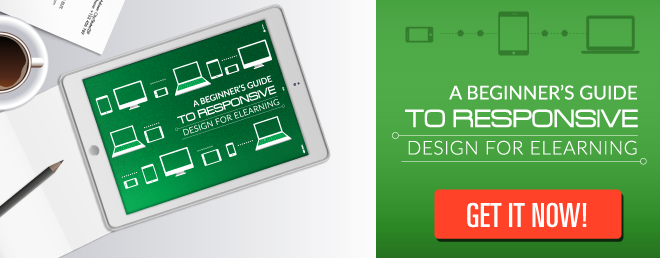Let’s be honest: your employees use smartphones and tablets every day, everywhere — including in your workplace.
Some learning leaders may wonder if this strong reliance on mobile devices (one study said it’s over 200 different times per day) hinders productivity. But could it instead be a blessing in disguise?
Forward-thinking companies should be developing ways to reach these employees where they are — providing real-time learning, in short, compelling content bursts.
After all, your employees are learning, taking action, and making decisions in a series of micro-learning moments. Taking advantage of these moments allows you to enhance your existing online training programs; you’ll be able to reach your employees where they are most comfortable: through the devices, they’re taking on the go.
What Are Micro-learning Moments?
Google describes micro-moments as “intent-rich moments when a person turns to a device to act on a need.”
On a daily basis, an average person will turn to their mobile device at some point because they:
- Want to KNOW something
- Want to DO something
- Want to GO somewhere
- Want to BUY something
And this doesn’t just happen once in a while; it happens all day, every day. A decision to purchase something, travel somewhere, or learn something new occurs spread out over time across many micro-moments.
If L&D professionals understand this behavior and offer valuable content that will allow employees to learn across micro-moments, the impact of training will be dramatically increased.
How to Start Planning Training for Microlearning Moments
Gone are the days when all employees sit for hours on end listening passively to training sessions. Today, people mostly learn on the go, non-linearly and actively, in short bursts when they can find time, and across a variety of devices.
Any training program needs to take this into consideration and map out the different stages of the learner’s journey, including how and when they will access your content. For training purposes, you need to focus especially on thinking about the “want to know” and “want to do” behaviors they have throughout each and every day.
Start by asking yourself:
What do your employees want to know when they turn to their smartphones and tablets?
How do they best consume information — especially training materials for your company?
Talk to your employees and their managers, or study their habits in the training programs that exist today. It’s essential to understand their common questions, their approaches to gathering information, and their learning preferences and patterns.
If you can understand the questions that employees are asking on a daily basis— specifically what they want to know and want to do — you’ll be able to create impactful micro-learning courses that meet their needs and solves their pain points.
Additional Read: Steps To Address Micro Learning Moments
Deliver Relevant Content As Quickly As Possible
Take a hard look at your content — is it the right size and format to effectively meet your employees’ needs?
There’s nothing worse than employers sitting through a 15-minute video when the most significant thing they wanted to learn (or what you wanted to teach them) is buried around the seven-minute mark. They’re very unlikely to turn to this content when they have a burning question on their minds.
If the content could be better delivered in a 3-minute video or a powerful infographic that delivers all relevant content — then you’re doing yourself and your employees a disservice by providing the information by another means.
Employees who turn to their mobile devices for “Want to do something” moments are looking for fast, rich content that answers their questions immediately. An executive who needs to find something important before a pitch isn’t going to scan through 50 slides in an eLearning course or wade through a 15-minute video. This person wants and needs to find the answer quickly.
If your curriculum can answer a “how-to” question, you’ll be able to solve your employees’ needs — and give them the confidence to keep coming back for further questions.
Additional Reads:
Is Your Company Embracing Just-in-Time Learning?
Numbers Don’t Lie: Why Microlearning is Better for Your Learners (and You too)
Here Are Some Other Ways To Support "Want-To-Know" and "Want-To-Do" Learning Moments:
Document the common questions that arise during your learners’ day-to-day activities. This will help you prioritize the most important micro-learning moments.
- Analyze WHERE your learners have the most potential (or need) to learn information. Use this information to tailor your program to these scenarios.
- Take advantage of mobile video: one of the preferred media that learners turn to for “want-to-do” micro-moments. Why Video is a Must-Have for Your Mobile Learning Strategy
- Ensure that your training platform is fast and easy to use. It needs to be quick and smooth, or your learners will grow frustrated and abandon the platform within seconds.
So, rather than be intimidated or annoyed at your employees’ reliance on mobile devices, take the time to understand how micro-moments play a part in their daily work activities.
If you can understand how your employees learn, you can deliver content that meets their needs. When they want to know something or want to do something, they’ll have confidence that your training curriculum will help them accomplish their goals.
REFERENCES:
Your Guide to Winning the Shift to Mobile
Micro-moments: 4 powerful marketing lessons that can improve your mobile learning
Enhancing Micro Learning Moments
How Microlearning Enables “Micro-Moments”
Micro-Moments: I Want To Do Moments https://digitalnext.co.uk/blog/micro-moments-want-moments/



